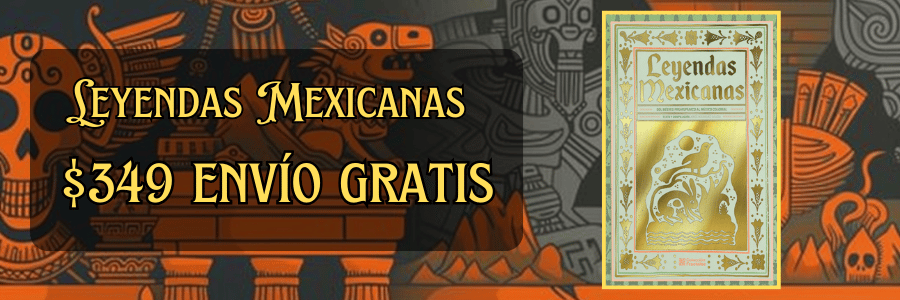The Role of Disease in the Spanish Conquest of Mexico
The Spanish conquest of Mexico in the early 16th century is a monumental event in world history, representing the collision of two vastly different cultures and the profound impact this had on the indigenous populations of the Americas. While the military prowess of the Spanish conquistadors, led famously by Hernán Cortés, is often highlighted as the primary factor for their success, the role of disease in facilitating this conquest is equally critical yet often overlooked. The introduction of Old World diseases to the New World had catastrophic consequences for the indigenous peoples of Mexico and played a pivotal role in the dynamics of the Spanish conquest.
Understanding how disease influenced the Spanish conquest requires an exploration of the health status of indigenous peoples prior to European contact. The population density and complexity of civilizations such as the Aztec Empire were of a scale unseen by the Spaniards. With sophisticated agricultural practices, established trade routes, and a centralized political structure, the Aztec society was thriving. However, these densely populated urban centers also created a favorable environment for the spread of infectious diseases. While the Aztecs had their own sets of diseases, they lacked exposure to the range of viruses and bacteria endemic to Europe, which would soon unleash devastation upon their populations.
When Hernán Cortés landed in Mexico in 1519, he brought with him a suite of Old World pathogens, including smallpox, measles, and influenza. The impact of these diseases was disastrous. Historically, the indigenous peoples of Mesoamerica had little to no immunity to these new illnesses; their immune systems lacked the necessary antibodies to combat infections that had long since become endemic in Europe. In the span of just a few years, smallpox in particular would spread like wildfire among indigenous populations, often in advance of the Spanish military campaigns. The waves of disease preceded the advance of Spanish soldiers and laid waste to entire towns and communities before the conquistadors even arrived.
Compounding the tragedy, the disease was often exacerbated by Spanish warfare tactics and the chaos that ensued during the conquest. As towns fell to Spanish forces, their inhabitants either fled, succumbing to diseases en route, or remained and fell sick within besieged walls. The resulting disintegration of social structures made it nearly impossible for the survivors to care for the sick and healthy alike. The breakdown in societal norms contributed to the rapid spread of disease, as the social networks that would usually facilitate caregiving and communal support collapsed.
One of the most troubling aspects was the psychological effect of disease on the Aztec populace. In the face of overwhelming epidemic conditions, the Aztecs experienced not only loss of life but also the existential crisis of faith and governance. Many believed that the arrival of the Spaniards and the disease that followed was a form of divine punishment. The perception of prophesied doom led to fatalism, further weakening resistance efforts against the invaders. The loss of leadership and morale collapsed military alliances and contributed to the rapid fragmentation of indigenous resistance.
Additional factors further influenced the interaction between disease and conquest. The Spanish adopted the method of "divide and conquer" against indigenous populations, leveraging existing rivalries and grievances. The Tlaxcalans, who were enemies of the Aztecs, allied with the Spaniards primarily out of a desire to overthrow their oppressors. However, their newfound alliance also invited the destruction of their people, as European diseases subsequently spread through their communities as well. The Tlaxcalans were among the first to experience the disastrous effects of smallpox, highlighting how alliances with the Spanish could prove fatal.
One cannot overlook the biological advantage provided to the Spanish. European populations were slowly acclimatizing to a host of diseases over centuries of interaction, leading to a degree of immunity not present in the indigenous populations. This immunity, however imperfect, provided the Spanish soldiers and settlers an enhanced ability to operate within the context of warfare and conquest. While experiencing illness was an inevitability for these early colonizers, it rarely resulted in high mortality rates as it did among the indigenous peoples.
The absence of coherent responses to the disease also pivoted around traditional medicinal practices within indigenous cultures. While the Aztecs and other Mesoamerican societies had their own medical methodologies and herbal remedies, these systems were not effective against the smallpox virus or other incoming diseases. The shock to their systems, coupled with the cultural disruptions, created standings where the indigenous peoples were unable to leverage their rich traditions of healing and plant knowledge to combat the onslaught of European illnesses.
Furthermore, the economic consequences of disease significantly affected indigenous communities. As laborers succumbed to illness, agricultural output dwindled, which in turn affected trade and food security. Stretched economic resources rendered survival more precarious, allowing the Spanish invaders to map socio-economic vulnerabilities which they exploited further. Without sufficient food or manpower for defense, the social structures of indigenous societies disintegrated.
Importantly, disease had far-reaching implications that extended beyond the immediate data of mortality. The collapse of major urban centers, including Tenochtitlan, meant not only a loss of life but also a loss of cultural continuity. The richness of Mesoamerican heritage, crafted over millennia, faced devastation through depopulation, forcing survivors into a cycle of mourning and adaptation. The cultural ramifications of this can still be felt today, as the legacy of conquest carries forward in the modes of cultural resistance, hybridization, and identity construction among indigenous descendants.
The impact of disease did not cease with the formal conquest of the Aztec Empire in 1521. Even after Spanish hegemony was established, the ongoing introduction of diseases and the Spaniards’ inability to effectively manage them contributed to sustained depopulation over decades. Epidemics would recur, culminating in valuable lessons – albeit marred by suffering – about the need for public health initiatives in the New World. Over the subsequent generations, the population of indigenous peoples would plummet from estimates of over 25 million at the time of first contact to less than 1 million by the late 17th century.
The narrative surrounding the conquest often focuses on military engagements, heroic figures, and simplistic dichotomies of civilization versus savagery. However, the truth lies in a complex interplay of human experiences, disease, and international encounters that shaped the contours of history. The role of disease cannot be understated; it was indeed one of the most potent forces shaping the fate of the Aztec Empire and the transformation of Mexico.
In retrospect, the convergence of disease and conquest serves as a stark reminder of the fragility of human life and society in the face of unseen pathogens. In many ways, the legacy of this event foreshadows how globalization and interconnectivity can lead to both great innovations and profound vulnerabilities. The unchecked spread of disease across boundaries remains a topic of discussion today and highlights the necessity for comprehensive understanding, Anticipatory public health measures, and global solidarity when facing pandemics.
By grappling with the historical role of disease during the Spanish conquest, scholars and students alike can glean valuable lessons that resonate with contemporary challenges. Disease did not merely facilitate a conquest; it fundamentally altered the course of history, emphasizing the profound interconnections between health, society, culture, and power. Acknowledging these narratives not only honors the experiences of those who suffered but also enriches our understanding of the complicated fabric of world history and humanity’s ongoing struggle with disease. Thus, the legacy of disease during the Spanish conquest remains a pertinent reminder of the interconnectedness of all human beings and the biases of historical narratives.
Explore More:
| How the Mexican Revolution Changed the Role of the Catholic Church |
| Education and Schools in Colonial Mexico |
| Women’s Rights in Mexico: Progress and Struggles After the Revolution |
| How the French Invasion of Mexico Impacted the Mexican Monarchy |
| The Artistic Legacy of Mexico’s Colonial Period: From Paintings to Sculpture |
| The Role of Oil in the Development of Alternative Fuels |
| How Mexican Artists Are Reimagining Their Cultural Roots |
| The Artistic Expression of Mexico’s Indigenous Communities |
| The Role of the Chichimeca in the Silver Mining Boom of Zacatecas |
| The Diplomacy of the French Intervention: Letters and Treaties |



